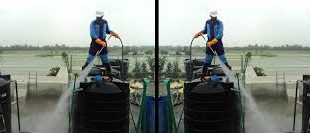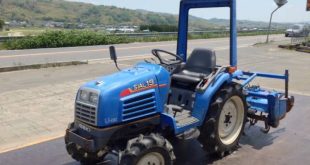Blasting equipment is indispensable in industries like construction, manufacturing, and mining, where surface preparation, cleaning, or material removal is a critical step. These tools help achieve efficiency, precision, and safety in challenging environments. Selecting the right blasting equipment not only maximizes productivity but also ensures worker safety and environmental compliance.
In this guide, we’ll delve deeper into the types of blasting equipment, key considerations for selection, maintenance tips, and how modern advancements are reshaping the industry.
1. Understanding the Role of Blasting Equipment
Blasting is the process of propelling abrasive materials at high speeds to clean, prepare, or refine surfaces. Depending on the application, the equipment used can vary greatly. The choice of equipment affects outcomes like speed, finish quality, and safety.
Industries that commonly use blasting equipment include:
- Construction: Removing paint, rust, or debris from metal and concrete surfaces.
- Mining: Clearing rock or mineral deposits for extraction.
- Automotive: Stripping paint or preparing vehicles for repainting.
- Manufacturing: Smoothing surfaces or cleaning machinery.
Let’s explore the most popular types of blasting equipment.
2. Types of Blasting Equipment
Blasting equipment is designed to meet the unique demands of various industries. Here’s an overview of the most commonly used equipment:
a. Sandblasters
Sandblasters are versatile tools for surface preparation and cleaning. They use pressurized air to direct abrasive materials at surfaces.
Types of sandblasters include:
- Pressure Sandblasters: These are highly effective for large-scale jobs, offering consistent pressure for heavy-duty cleaning.
- Siphon Sandblasters: Economical and easy to operate, these are ideal for small or medium tasks.
- Cabinet Sandblasters: Enclosed systems that prevent dust from escaping, ensuring precision and safety.
Common abrasives used with sandblasters are silica sand, aluminum oxide, and glass beads, depending on the desired finish.
b. Shot Blasting Machines
Shot blasting machines are used for cleaning, polishing, and surface strengthening. Instead of air, they use centrifugal force to propel steel shots or other abrasives. These machines are popular in industries like automotive manufacturing and shipbuilding.
Benefits of shot blasting include:
- Superior surface preparation for coatings or paints.
- Increased longevity of metal surfaces by hardening them.
c. Portable Blasting Units
Portable blasting equipment is perfect for on-site operations. Lightweight and compact, these machines are ideal for tasks like graffiti removal, outdoor cleaning, or restoring old structures.
d. Dust Collection Systems
Dust collection systems are critical for maintaining workplace safety. They capture airborne dust particles generated during blasting, ensuring compliance with environmental and safety regulations.
e. Wet Blasting Equipment
Unlike traditional dry blasting, wet blasting uses a mixture of water and abrasive material. This method minimizes dust and static electricity, making it safer for sensitive applications like aerospace or electronics.
3. Key Considerations for Choosing Blasting Equipment
Selecting the right equipment involves more than just matching tools to tasks. Consider these factors to ensure optimal performance and safety:
a. Application Requirements
Different surfaces and materials require different blasting techniques. For instance:
- Use pressure sandblasters for tough jobs like rust removal.
- Choose cabinet systems for delicate, high-precision tasks.
- Opt for wet blasting for applications requiring minimal dust and heat.
b. Abrasive Compatibility
Each blasting application requires specific abrasives. Ensure your equipment is compatible with the abrasive you intend to use:
- Silica Sand: For general-purpose cleaning.
- Steel Grit: For aggressive cleaning and preparation.
- Glass Beads: For a smooth, polished finish.
c. Durability and Build Quality
Blasting equipment is often exposed to harsh environments. Opt for machines made from robust materials like stainless steel or reinforced aluminum to ensure longevity.
d. Safety Features
Safety should never be compromised. Look for equipment with essential safety features like:
- Pressure regulators to prevent overloading.
- Built-in filters for dust containment.
- Emergency shut-off mechanisms.
e. Environmental Considerations
Modern industries are increasingly focusing on eco-friendly solutions. Wet blasting equipment and dust collection systems are great for reducing environmental impact and maintaining air quality.
f. Budget and Maintenance Costs
While initial cost is an important factor, also consider long-term expenses like maintenance, replacement parts, and consumables. High-quality equipment may have a higher upfront cost but can save money over time by reducing downtime and repair needs.
4. Maintenance Tips for Blasting Equipment
Proper maintenance ensures the longevity of your equipment and consistent performance. Here are some best practices:
a. Inspect Components Regularly
Regularly check hoses, nozzles, seals, and other components for signs of wear or damage. Replace worn-out parts promptly to prevent operational inefficiencies.
b. Clean After Every Use
Abrasive buildup can reduce the efficiency of blasting equipment. Clean all components thoroughly after each use to maintain performance.
c. Store Properly
Store equipment in a clean, dry environment to prevent corrosion and damage. Use protective covers for added security.
d. Schedule Professional Servicing
Periodic professional servicing helps identify and fix potential issues before they become costly problems. Stick to the manufacturer’s recommended service intervals.
e. Use Quality Consumables
Substandard abrasives or replacement parts can damage your equipment. Always use high-quality consumables from reputable suppliers.
5. Innovations in Blasting Equipment
Technological advancements are reshaping the blasting industry, offering improved efficiency and safety. Some of the latest trends include:
a. Automation
Automated blasting machines are gaining popularity in industries like automotive and aerospace. These machines deliver consistent results while minimizing human involvement.
b. Eco-Friendly Blasting
Manufacturers are developing equipment that uses recyclable abrasives and reduces waste. Wet blasting systems, for instance, minimize dust and water usage.
c. Smart Technology
Modern blasting machines are equipped with smart sensors and IoT technology for real-time monitoring. These features help track performance and identify maintenance needs.
d. Hybrid Systems
Hybrid systems combine the benefits of multiple blasting techniques, such as wet and dry blasting, to offer versatility in applications.
6. Safety Best Practices for Blasting Operations
Blasting operations involve risks like flying debris, dust inhalation, and noise. Follow these safety tips to protect workers and maintain compliance:
a. Wear Proper PPE
Provide workers with personal protective equipment (PPE), including helmets, gloves, goggles, and respirators.
b. Train Staff
Ensure all operators are properly trained in equipment use and safety protocols.
c. Maintain Ventilation
Use dust collection systems and proper ventilation to reduce airborne particles.
d. Follow Manufacturer Guidelines
Always adhere to the manufacturer’s recommendations for equipment use and maintenance.
7. Conclusion
Blasting equipment is a cornerstone of many industrial processes, offering unmatched efficiency and precision. By understanding the types of equipment available, key considerations for selection, and best maintenance practices, you can ensure safe and productive operations.
Whether you’re preparing metal surfaces, restoring old structures, or cleaning machinery, investing in the right blasting tools is essential. Keep up with the latest innovations and safety standards to stay ahead in your industry.
For expert advice and high-quality blasting equipment, consult trusted suppliers who prioritize performance, durability, and safety.
This extended version offers a comprehensive look into blasting equipment, ensuring readers gain valuable insights into the subject while addressing practical concerns.
 Daily Blogger News Stay updated with the latest trends and insights. Your reliable source for daily updates and information.
Daily Blogger News Stay updated with the latest trends and insights. Your reliable source for daily updates and information.






